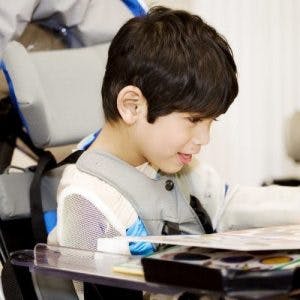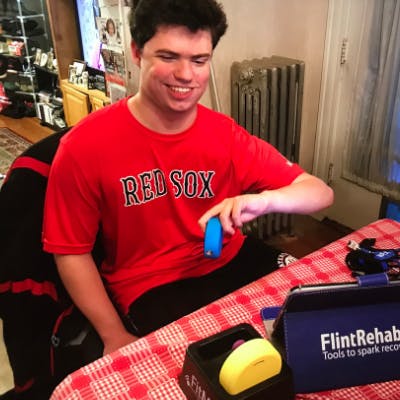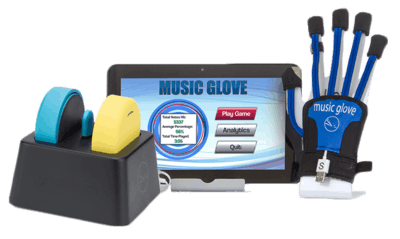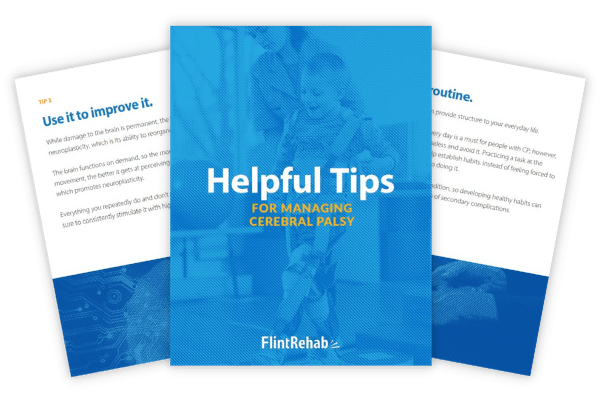Cerebral palsy is a neurodevelopmental disability that primarily affects an individual’s muscle tone. Muscle tone refers to how much tension or resistance a muscle has at rest.
Because abnormal muscle tone can significantly affect one’s posture, movements, and balance, it is essential to seek treatment to prevent complications from progressing.
To help you understand how abnormal muscle tone may affect an individual with cerebral palsy, this article will discuss:
- How cerebral palsy affects muscle tone
- High muscle tone: understanding hypertonia
- Low muscle tone: understanding hypotonia
- How to treat abnormal muscle tone
How Cerebral Palsy Affects Muscle Tone
Cerebral palsy is caused by damage to areas of the brain that control motor functions like muscle tone, balance, and coordination. Although there’s nothing directly wrong with the muscles, damage to the brain affects the ability to control the muscles voluntarily.
Normally, the brain will send signals down the spinal cord and through peripheral nerves to direct the muscles to contract and relax. However, the brain damage that causes CP disrupts the transmission of these signals, resulting in abnormal muscle tone.
Depending on the location and severity of damage to the brain, individuals may experience different types of abnormal muscle tone. For example, individuals may experience high or low muscle tone, or a combination of both. In the following sections, we’ll discuss the primary characteristics of each and how they affect movement.
Cerebral Palsy and High Muscle Tone

Individuals with cerebral palsy that experience high muscle tone (hypertonia) generally have stiff, rigid movements due to continuously contracted muscles. Hypertonia may be present in only one area of the body, such as just one arm, or it may be more widespread, potentially affecting a majority of the body.
However, high muscle tone is not always indicative of cerebral palsy. Hypertonia can be the result of any sort of damage to the central nervous system (the brain or spinal cord) such as a spinal cord injury, stroke, or traumatic brain injury. Another major criterion for a cerebral palsy diagnosis is the age at which the injury is sustained. Generally, cerebral palsy is diagnosed when the individual demonstrates neurologically-based motor impairments before 5 years of age. If you suspect that your child has high muscle tone, speak to their pediatrician for an official diagnosis.
Depending on the severity of one’s CP, high muscle tone can affect the body in many different ways.
Some of the most common signs of high muscle tone include:
- Spasticity
- Slow, firm movements
- Rigid positioning
- Musculoskeletal deformities when growing due to an uneven muscle pull
- Joint and muscle pain
- Spasms and other involuntary movements
- Delays in motor development
- Lack of flexibility
- Abnormal walking patterns
Without proper management, high muscle tone may pull the body into abnormal postures and limit range of motion. As a result, individuals with severe hypertonia have an increased risk of compromised posture, scoliosis, hip displacement, contracture, and bony torsion.
Now that you understand the implications of high muscle tone, the following section will discuss low muscle tone.
Cerebral Palsy and Low Muscle Tone
Individuals with low muscle tone (hypotonia) generally have floppy, loose limbs as a result of constantly relaxed muscles.
Low muscle tone is most common in individuals with ataxic cerebral palsy. This type of cerebral palsy is caused by damage to the cerebellum, which is primarily responsible for regulating balance, coordination, and fine motor skills. Often, low muscle tone contributes to difficulties performing activities that require these skills.
Children with hypotonia may demonstrate the following signs:
- Lack of strength
- Low activity tolerance
- Delays in motor skill development (rolling, sitting, crawling, walking)
- Rounded shoulder posture
- Tendency to lean
- Joint hypermobility
- Increased flexibility
- Poor head control
While the brain damage that causes CP does not worsen over time, abnormal muscle tone can. Therefore, it’s essential to seek proper management to preserve functional independence. The following section will address interventions that may help improve muscle tone.
How to Treat Abnormal Muscle Tone in Individuals with Cerebral Palsy

Depending on the severity of one’s abnormal muscle tone, various treatments may be recommended. It’s important to note that individuals with cerebral palsy can experience a combination of high and low muscle tone. For example, many individuals experience high muscle tone in their limbs and low muscle tone in their trunks.
Therefore, treatment for abnormal muscle tone in individuals with CP should be personalized to each individual’s specific motor impairments. Below, we’ll discuss some common treatment interventions for abnormal muscle tone.
Rehabilitative Therapies
Participating in rehabilitative therapies like physical, occupational, and speech therapy is essential for effectively managing abnormal muscle tone. Because rehabilitative therapies are personalized to each client’s functional abilities, individuals with high or low muscle tone alike may benefit.
Physical therapy hones in on your child’s gross motor skills through targeted exercise while occupational therapy will work on developing your child’s fine motor skills with practical activities of daily living. Stretching and manual therapy can help lengthen contracted muscles to ease movement.
Because abnormal muscle tone can make it difficult to chew, swallow, and speak, individuals may also benefit from speech therapy. There, they’ll learn how to strengthen their oral muscles and communicate and/or eat more effectively.
Orthotic Devices
Another intervention that can help individuals with cerebral palsy better manage abnormal muscle tone is the use of orthotics like braces and splints. Orthotics are wearable devices that help promote correct musculoskeletal alignment. Because it creates a supportive mold around the limb, bracing increases stability and makes it difficult to compromise form when performing affected movements.
However, consistent reliance on a device to support the muscles may worsen muscle tone over time, so attempting to improve muscle tone through therapeutic exercises such as stretching and/or strengthening is a better long-term solution.
Medications
Individuals with high muscle tone may benefit from Botox injections or muscle relaxants. These medications will help temporarily relieve high muscle tone.
To promote long-term relief, it is recommended to take advantage of the effects of these medications and participate in physical/occupational therapy exercises. This will help stimulate the brain and encourage it to reorganize its neural circuitry so that control over the affected movements is moved to a healthy area of the brain.
Surgery
To relieve high muscle tone, surgeons may recommend a surgery called selective dorsal rhizotomy. This procedure involves making selective incisions at the nerve roots to reduce the hyperexcitability of the muscles.
Generally, surgery is only recommended for severe cases of high muscle tone that do not respond to other spasticity treatments.
Cerebral Palsy and Muscle Tone: Key Points
Both high and low muscle tone can cause children with cerebral palsy to develop poor posture, motor control, and balance. Therefore, it’s essential to address abnormal muscle tone early through participation in rehabilitative therapies, orthotic devices, and other management interventions.
We hope this article helped you understand how cerebral palsy affects muscle tone, as well as the most effective ways to manage it.














